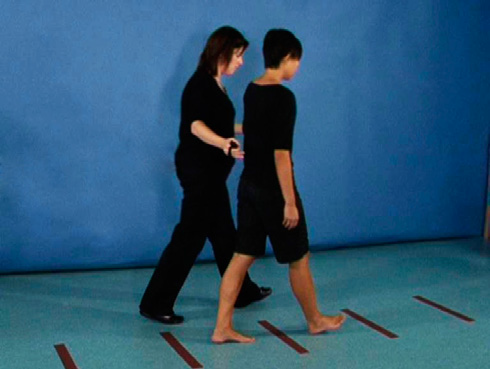AIM:
To increase step length using visual cues or cognitive cues
Rationale:
Hypokinesia while walking is overcome by the use of cues. Visual cues (step length markers) or cognitive cues (focusing on taking ‘big steps’) are used to cue appropriate step length. Progression involves ensuring the patient maintains step length and speed when the cues are removed and concurrent tasks are added. The aim of this exercise is to increase step length during walking.
Note: some patients will use permanent visual cues in the home environment and some patients will be unable to perform concurrent tasks without increasing the risk of freezing and/or falling.
Equipment:
- Table relating step length to height (see table below)
- Strips of cardboard (5 cm by 55cm) for step length markers
- Tape measure
- Stop watch
- Cup of water
Key Points:
- The distance between each step length marker (visual cue) is approximately 1/3 of the height of the patient
- Therapist uses stop watch (to monitor speed) and counts number of steps (to monitor step length)
- Ensure therapist remains close by to steady patient if necessary
Common Errors:
- Therapist does not stand by to steady the patient, or stands too close and interferes with the patient’s walking.
Progression and Variety:
- Remove cues
- Increase speed
- Add concurrent cognitive/manual tasks
- Introduce obstacles, uneven surfaces, change of direction
